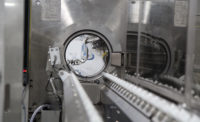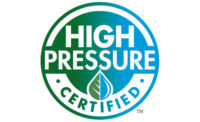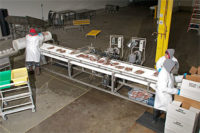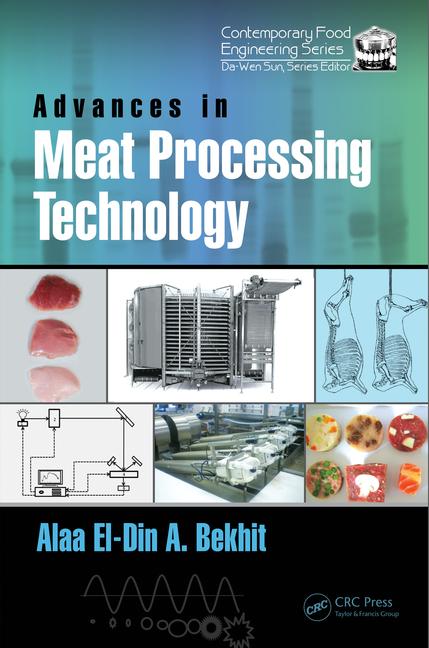High-pressure processing (HPP) is fast becoming the preferred food safety method for many producers, allowing retailers to stock refrigerated foods and beverages that are safe, high quality, clean and taste great.
HPP is an effective technique to extend shelf life, maintaining freshness, keeping the flavor and nutritional qualities intact and improving food safety without the need for additives or artificial preservatives. Deli meats, wet salads, juices, sauces, ready to eat (RTE) meals and pet food are among the many products that benefit from HPP.

Table of Contents:
Many companies, large and small, prefer to outsource their HPP process because of the expertise required and expenses associated with the in-house process (i.e., capital and annual operating costs). By outsourcing, producers can focus on their core business, instead of learning a complicated process. Some large manufacturers outsource HPP to third-party providers to meet customer demand, manage overflow and support their needs when in-house equipment has performance issues.
The outsourced HPP market is projected to outpace the overall HPP market growth through 2022, according to third-party market studies. While HPP technology is in the early stages of adoption, the HPP market has increased 16.4 percent over the past five years and is expected to increase 22.2 percent to $640 million by 2022.
While there are many good reasons to outsource HPP, some producers choose to keep it in house, with the major reason being control of the product from manufacture to shipping.
Here are some things to consider whether you choose to outsource or operate your own HPP process.
By outsourcing HPP to third-party service providers, food companies can focus on their core competencies in product development, manufacturing, marketing and selling. Some of the expertise required for an effective and efficient HPP operation include:
- Proficiency with technical equipment, including maintenance efficiency, which delivers lower operating costs than a food manufacturer would experience operating in house;
- Research and development expertise to develop and comply with packaging, formulation and hold times that vary by product;
- Deep knowledge of packaging, products and technology, which speeds innovation;
- Ability to provide pre-HPP and post-HPP value-added services that drive additional value for customers (e.g., cold storage, tempering, labeling, kitting, etc.).
While the idea of in-house HPP may sound like a good thing, producers need to consider whether they can maximize use of their HPP machine for cost efficiencies. Most third-party service providers, such as Universal Pure, have multiple machines across several locations allowing for shifting business from machine to machine or location to location, to handle capacity issues and meet customer requirements.
Third-party service providers can also take advantage of operating HPP machines sourced from the largest manufacturers — Avure and Hiperbaric — enabling engineering teams to combine best practices of each machine for an optimized solution.
Costs associated with HPP processing are substantial and include much more than the purchase of a machine.
- Facility: Equipment, refrigeration, reinforced concrete floor pads, power and drains.
- Ancillary equipment: Investment needed for packing, boxing, lidding and other supplementary equipment.
- Labor, fixed and variable: On average, five to 12 employees are needed depending on products and HPP machine size. Labor needs include line workers, maintenance workers, supervisors, quality assurance (QA) technicians and a sanitation crew.
- Maintenance and quality: Parts range from $5 to $12.50 per cycle, as older equipment has more maintenance cost per cycle. Food safety technology requires a financial commitment to responsible maintenance and quality assurance including audits, U.S. Department of Agriculture (USDA) and U.S. Food and Drug Administration (FDA) costs and QA inspections and certificates.
- Operational efficiency: Optimizing capacity utilization and processing efficiency are key to profitability.
One of the major advantages of outsourcing is that it allows food manufacturers the freedom to adjust product capacity and frequency at any time without the capital investment. Food companies without the requisite in-house HPP expertise risk costly mistakes, repairs, downtime and reputational damage if poorly executed.
Overall, by tapping into the third-party service provider’s wealth of experience, customers can leverage resources to optimize product formulations, choose packaging to match shelf-life goals, validate the proper HPP parameters and navigate the project’s regulatory requirements.
HPP service providers can support logistics and provide efficient distribution without added costs.
HPP is a batch process, often a step after the production process, not a step in the process. Food companies can send their products in final packaging for HPP and, in many cases, for all post-HPP value-added needs and logistics to distribute directly to the customer.
Manufacturers often produce products in multiple facilities, and many service providers have multiple locations that are equipped to handle the inbound and outbound logistics of a product.
Third-party service providers have the ability to combine customers’ HPP products to fill truckloads for more efficient distribution without added costs.
Outsourcing HPP needs enables quick startup and ongoing flexibility for food companies.
As companies evaluate the best decision for their businesses, outsourcing or in house, the following questions are worth considering:
- Do you have labor on the weekends, as machines need preventative maintenance regularly to keep costs down?
- Do you have 20 million to 30 million pounds of product annually?
- Do you have the necessary staff to support the operation?
- Have you factored in overhead and utility costs for the production room?
- Have you factored in average parts cost?
- Have you considered downtime, as realistically it is 8 to 10 percent or higher, because of maintenance, lack of product, staffing and sanitation?
- Have you considered the risk associated with a major failure?
While each HPP machine is costly, additional costs to consider include front-end and back-end ancillary equipment and building retrofit. Capital costs, rent and utilities and space requirements are other factors worth noting.
Quality assurance also plays a big part when operating HPP machines, as most products are regulated by the USDA or the FDA. Additionally, internal and external audits and QA inspections and certificates are required.
HPP is a growing food safety process and will increase in coming years, with consumer demand for fresh foods and beverages with clean labels and fewer preservatives. As the application of HPP continues to increase, it is important to educate yourself and understand the implications of the decision of whether to invest in HPP in-house or to outsource your HPP needs. NP









